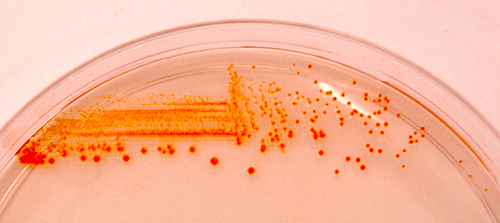Many chemicals released into the environment from industrial and residential waste streams don’t occur in nature, so the microbes in the soil and water may not have the enzymes capable of breaking these compounds down, causing these pollutants to build up and cause problems. Some microbes have adapted over time, developing pathways by which they can break down these contaminants. One such microbe is the bacteria Sphingobium chlorophenolicum, which was isolated from soil that was heavily contaminated with a pesticide that was first introduced in the 1930s and is a common contaminant found at Superfund sites.

Photo: courtesy of Shelley Copley, University of Colorado, Boulder
Sequencing the genome will give the researchers insight into understand how this bacteria has developed pathways that can break down this contaminant, and how it has harnessed enzymes that might otherwise serve other functions. Identifying the enzymes involved could also lead to developing novel pathways to improve the degradative processes. Additionally by understanding the bacterium’s genetic code, researchers can better study mutations that result in more efficient and enhanced pollutant-degrading abilities, opening up the possibility of someday resequencing the mutations’ genomes and then comparing them to the initial genome sequence to more quickly identify the locations and functions of these changes.
Principal Investigators: Shelley Copley, University of Colorado at Boulder
Program: CSP 2010